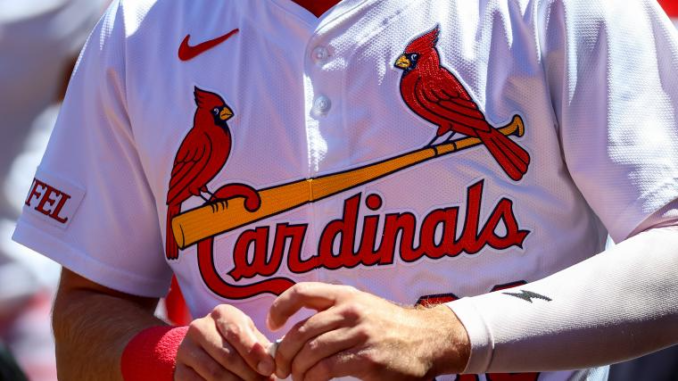
I’m skeptical that the Cardinals will be this aggressive, but they should at least contemplate making some major trades by the deadline.
Let me be clear: I don’t think the St. Louis Cardinals will make any dramatic or “blockbuster” moves at this year’s trade deadline. This doesn’t mean they won’t make significant moves, but a major swing this July seems unlikely.
Frankly, I don’t believe this cautious approach is necessarily wrong for the team. Any big moves could drain their farm system and still leave them trailing the top World Series contenders. I’m not suggesting their biggest moves should be for players like Tyler Anderson or Kevin Pillar, but I also understand them avoiding the Garrett Crochet sweepstakes, for example.
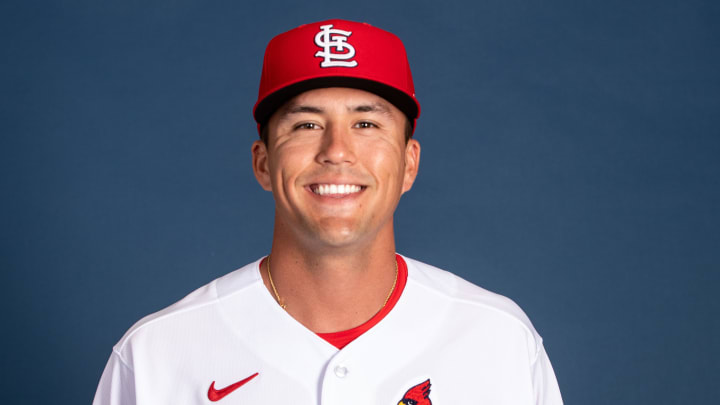
However, the more I’ve thought about it, the more intrigued I am by the possibility of some bigger swings the Cardinals’ front office could make. I’ve been considering different trade scenarios involving teams with players the Cardinals would love to have, but at a high cost. Again, while I doubt the Cardinals will make such a significant move soon, it’s interesting to discuss what kinds of deals might make sense for them to consider.
Think of this as a fun exercise in exploring “what if” scenarios that we believe won’t happen, but could make sense if the Cardinals decided to be aggressive. For the following five deals, here are the parameters that made them seem reasonable, despite their extreme costs:
1. The deal has to be painful. If you’re designing a blockbuster deal for the Cardinals and feel entirely comfortable with the pieces you’re giving up, it’s probably far from what it would actually take to pull off such a deal.
2. The deal must address one or more of the Cardinals’ current needs: a front-line starting pitcher, bullpen help, or a right-handed bat for the lineup.
3. The player(s) the Cardinals acquire must have some control beyond 2025. I don’t see the Cardinals considering a blockbuster move that involves giving up significant young talent for someone who could leave in a year and a half. This rules out great players like Nathan Eovaldi and Zach Eflin, but also fun ideas like Vladimir Guerrero Jr., as I don’t see the Cardinals signing him long-term.
Consider this exercise a list of deals the front office should at least pause and discuss. It doesn’t mean they should make any or all of these deals, but these are the kinds of packages that warrant serious meetings and follow-ups. They are the types of moves that, while risky, could transform the team for both now and the future.
With that being said, here are five blockbuster trade ideas that the Cardinals should consider at this year’s trade deadline.
Why this makes sense for St. Louis in the immediate future:
Imagine a team trying to score off of Ryan Helsley and Mason Miller as the Cardinals make their push for a postseason berth. Those two would become formidable weapons in October. Talk about shortening games—the Cardinals could shut down the 8th and 9th innings against the best offenses in baseball, allowing Andrew Kittredge, JoJo Romero, Ryan Fernandez, Matthew Liberatore, and others to secure the 6th and 7th innings in tight playoff games.
We’ve seen dominant bullpens carry teams deep into October before, but I can’t think of a recent duo that compares to what Miller and Helsley could offer this postseason. While the rotation might still be a concern, the depth and quality of the Cardinals’ bullpen after this deal would let them pull starters at the first sign of trouble and rely on their strong bullpen arms to shut down opponents.
As for Brent Rooker, he is exactly what the Cardinals’ offense needs right now. He mashes left-handed pitching (.948 OPS against both lefties and righties this year), hits for power (23 HR in 365 PA), and is highly productive with runners in scoring position (1.214 OPS with RISP). He is a perfect offensive fit for this club, and given how much they need another bat like his, they would find a way to make room for him.
Rooker is primarily a DH but can occasionally play corner outfield. Paul Goldschmidt and Nolan Arenado (mostly Goldschmidt) haven’t been good enough this year to “need” to DH when they need a break from the field, so the Cardinals could DH Rooker every day and have him cover corner outfield when Contreras needs a day off.
Why this makes sense for St. Louis long-term:
This is a significant price for the Cardinals to pay, but the benefits would extend beyond their 2024 campaign and into several future seasons.
Rooker won’t be a free agent until 2028 and Mason Miller until 2030. While the Cardinals would be sacrificing substantial control over players like Jordan Walker, Nolan Gorman, Tink Hence, and Ivan Herrera, they’d gain a lot in return with Miller and Rooker. I still believe in Jordan Walker, and his potential far surpasses Rooker’s value, but honestly, wouldn’t you take Rooker’s current offensive production for Walker over the next few years? Turning Walker’s potential into Rooker’s reality is worth considering, especially with Miller’s talent in the mix. I wouldn’t trade Walker for Rooker alone, but I’d definitely move Walker and more for Miller, which is the essence of this deal.
The Cardinals are only giving up one current contributor in Gorman, whose inconsistency has been problematic this year. The left-handed production from Alec Burleson, Brendan Donovan, and Lars Nootbaar reduces the long-term need for Gorman. Trading him for the right-handed production they desperately need makes sense.
Losing Tink Hence is tough, but we can only hope Hence becomes as impactful as Miller is today, and Miller has just one year less of control. Herrera is valuable too but could help close the deal for an Athletics team building for the future.
Mason Miller might still become a front-line starter. The Athletics moved him to the bullpen to keep him healthy for 2024 and then plan to try him in the rotation in 2025. Miller has been more dominant than expected, so the transition might not be simple. However, the Cardinals would have that option.
If the Cardinals keep Miller in the bullpen, they could trade Helsley in the offseason to recoup some value. Helsley is a free agent after 2025, so trading him instead of paying him could be sensible.
This deal is bold, and the Athletics might not agree, but if I’m in the Cardinals front office, we’re discussing the implications and deciding if it’s worth it. The cost-controlled nature of Miller and Rooker makes this deal very attractive despite the talent given up.
Why this makes sense for St. Louis in the short-term:
Tarik Skubal stands out as the most valuable starting pitcher in baseball after Paul Skenes. Last season, Skubal impressed many with his 2.80 ERA and 2.00 FIP over 15 starts, achieving an 11.43 K/9 while playing for a struggling Tigers team. His breakout performance, alongside other emerging young talents in Detroit, led to optimism about the Tigers’ playoff prospects for 2024.
However, the Tigers are now sellers again, and they have no reason to part with Skubal unless they receive a substantial return. Skubal is a Cy Young contender, with a 2.34 ERA over 123 innings and a strikeout rate exceeding 30%. Any team acquiring him would immediately gain a new ace.
The Cardinals are in dire need of a top-tier starter. While they could opt for veterans requiring less trade capital, acquiring Skubal would be an exciting move. Pairing Skubal with Gray would create an elite pitching duo, giving the Cardinals a strong chance in playoff series, especially with their dynamic bullpen. Although this trade wouldn’t address their offensive issues, the Cardinals still have hitters they expect to improve.
This potential deal, similar to the one involving the Athletics, would allow the Cardinals to make a significant move without heavily impacting their MLB roster. Trading Lars Nootbaar would be a loss, but with their other left-handed hitters, it wouldn’t be devastating. In acquiring Skubal, Detroit would likely require MLB-ready talent, so offering players like Nootbaar, Walker, and Herrera, along with a new pitching prospect like Hence, might be enough to complete the trade.
Why it makes sense for St. Louis long-term:
It’s a significant amount of future value to part with, but Skubal still has two years of team control left after this season, and the Cardinals would be wise to try to extend him this offseason.
Acquiring Skubal would provide St. Louis with a cost-controlled ace through the 2026 season, enhancing their potential for 2024 and beyond. While losing Walker, Nootbaar, Herrera, and Hence would be tough, the Cardinals have a surplus of young hitters on their major league roster and emerging pitchers to compensate for Hence’s departure.
This trade could potentially harm St. Louis in the long run if those players become key contributors for Detroit. However, in many trades, the team acquiring the best player often comes out ahead. I’ve previously defended the Cardinals’ decision not to trade for Juan Soto because that deal would have cost significantly more and Soto wasn’t likely to re-sign in St. Louis. If the Cardinals trade for Skubal, they must secure his long-term contract.
While it’s unlikely the Tigers will trade Skubal and even less likely that the Cardinals will acquire him, it’s an interesting scenario to consider.
Why it makes sense for St. Louis in the short-term:
This trade might be more feasible in the offseason, but the Cardinals and Mariners seem like a perfect match, addressing each other’s needs. Whether it’s Bryan Woo or one of the Mariners’ many talented pitchers, the Cardinals should seriously consider acquiring one.
KMOV’s Brendan Schaeffer and I discussed on our new podcast “Philosophical Differences” how, on paper, the Mariners and Cardinals are an ideal fit. However, in practice, both teams might struggle to agree due to differing valuations of their players. A straightforward one-for-one trade may not work, so one team might need to add an extra piece to finalize a deal. Given the Mariners’ pressing need for offense, they might have to adjust their approach.
The Mariners might prefer offering Emerson Hancock and another player for someone like Gorman, but in this scenario, I propose the Cardinals trading Gorman and Thomas Saggese for Mariners’ starter Bryan Woo.
Woo made his debut for Seattle last year, recording a 4.21 ERA in 18 starts and showcasing his impressive skills. Despite battling an injury this year, he has improved, posting a 2.54 ERA in 10 starts. Woo still has potential for growth, especially in increasing his strikeouts, and could become a future front-line starter. His current performance already suggests that potential.
Why it makes sense for St. Louis long-term:
The Cardinals have promising young pitchers like Tink Hence, Quinn Mathews, and Cooper Hjerpe, among others. However, acquiring a current rotation player with potential and control would be a significant move. While aiming for someone like George Kirby or Logan Gilbert would be exciting, it’s unlikely the Mariners would trade them soon.
Seattle’s offense is struggling, compounded by Julio Rodriguez’s recent stint on the injured list, though he hasn’t been performing well. They need to bolster their lineup at the deadline, and adding Gorman could be a valuable start. Despite his inconsistencies, his power to change games would be crucial for the Mariners.
As I’ve mentioned before, losing one left-handed bat isn’t a huge blow for the Cardinals. This could allow them to bring back Ivan Herrera and frequently use him as a DH. Assuming they add another right-handed outfield bat, Donovan can move back to second base. Gorman has had a lackluster season, so while he might still contribute later, the Cardinals wouldn’t be losing a currently productive player.
Why it makes sense for St. Louis in the short-term:
I know this will never happen. The Cubs trading Justin Steele to the Cardinals is highly unlikely. Similarly, it’s hard to imagine the Cardinals giving up this level of talent to a division rival. However, the trade framework does make a lot of sense.
The Cubs are expected to sell at this year’s deadline after another disappointing season. While they aren’t looking to undergo a full-scale rebuild, there are rumors they might consider trading Steele to maximize his value for the club’s future. Steele would be an ideal addition alongside Gray at the top of the Cardinals’ rotation.
This season, Steele has a 3.07 ERA over 15 starts and 91 innings. He excels at limiting hard contact and inducing hitters to chase pitches. Additionally, left-handed pitchers tend to perform well at Busch Stadium, so Steele could thrive even more in a Cardinals uniform.
Pairing Gray and Steele would give the Cardinals a strong rotation heading into October, and this trade wouldn’t require them to part with any Major League players. Hence, a top pitching prospect, would enhance the Cubs’ already strong farm system, while Gordon Graceffo would add depth and provide innings immediately.
Ivan Herrera has some defensive shortcomings, but the Cubs have struggled at the catcher position since losing Willson Contreras in free agency. Developing Herrera could give the Cubs a reliable everyday catcher to compete with Contreras in the future.
Why it makes sense for St. Louis long-term:
Steele isn’t a free agent until 2028, so the Cardinals will have a cost-controlled pitcher for several years. Steele represents the ideal future for Tink Hence, and securing him now is more valuable than holding out for future potential. Trading Herrera and Graceffo, along with Hence’s potential, seems reasonable to get a proven player like Steele.
However, it might not be the best long-term strategy for them to trade assets to the Cubs. But if someone else is willing to make the trade, it might not be a huge concern. The Cubs likely prefer to get more value from St. Louis or find a trade for Steele elsewhere.
Why it makes sense for St. Louis in the short-term:
The final suggestion on this list is a variation of a popular fan idea that’s been circulating lately. Given Bobby Miller’s significant struggles this year, some Cardinals fans believe a trade involving Walker and Miller could benefit both teams. However, I think a swap involving Nolan Gorman would be even more advantageous for both sides.
I want to emphasize again that I still believe strongly in Walker’s potential. He’s incredibly talented and only 22 years old. Remember, he was a productive major leaguer last season and came back from a brief Triple-A stint hitting 20% above league average in the last four months. He’s the kind of talent I’d prefer to stick with rather than “sell low.”
That said, the Miller idea is intriguing. The Dodgers are in win-now mode, and Gorman could fill one of their two weakest offensive positions—second base or third base—providing them with another power-hitting lefty behind Shohei Ohtani and Freddie Freeman.
For the Cardinals, acquiring Miller would be a bet that he can rebound and return to being a top-tier starter. If Miller were performing as expected, Gorman wouldn’t be enough to make the trade happen. This deal would only work if the Dodgers are willing to sell low on Miller while banking on Gorman’s potential.
Last year, Miller had a solid 3.76 ERA over 22 starts for the Dodgers and accumulated 2.8 fWAR. He excelled in inducing groundballs, avoiding hard contact, and had excellent fastball velocity. His five-pitch repertoire, particularly his fastball/sinker and complementary change-up and curveball, was effective.
This year, however, Miller has struggled with an 8.07 ERA in seven starts, with his slider particularly disappointing. To regain his previous success, he’ll need to either improve his slider or consider abandoning it.
While this trade might not provide immediate benefits for the Cardinals, the potential long-term gains make it a worthwhile consideration.
Why it makes sense for St. Louis long-term:
Sonny Gray has been a valuable asset at the top of the Cardinals’ rotation, but he’s getting older. Although St. Louis has promising young pitchers coming up, history shows how quickly those prospects can falter (consider the Cardinals’ top pitching prospects from the mid-2010s). Bringing in Miller to join future talents like Hence, Mathews, and Hjerpe could significantly enhance the long-term prospects of their pitching staff.
This season has underscored the importance of having ample pitching depth. Even teams with the strongest pitching rosters often find themselves needing more arms by the trade deadline due to the inevitability of injuries in today’s game. Having a surplus of pitchers is a more prudent strategy than relying on a few key players.
While losing Gorman would be challenging, it’s feasible to replace him either internally or by acquiring a veteran hitter in the offseason. However, acquiring a talent like Miller is a rare opportunity, making it a valuable consideration.
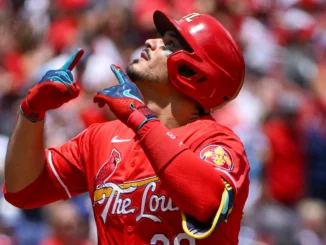
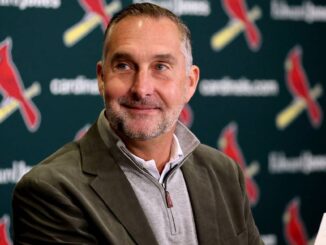
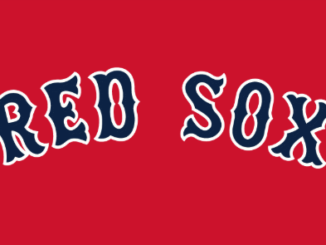
Be the first to comment